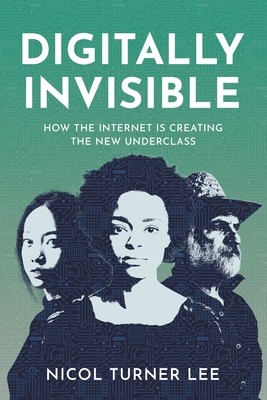
- We will send in 10–14 business days.
- Author: Nicol Turner Lee
- Publisher: Brookings Institution Press
- ISBN-10: 0815738986
- ISBN-13: 9780815738985
- Format: 14.5 x 21.3 x 0.8 cm, hardcover
- Language: English
- SAVE -10% with code: EXTRA
Reviews
Description
Real-life consequences of the digital divide, and what can be done to close it
More than one-half of the world's 7.7 billion people still do not have access to the Internet, including millions of people in the United States, which has led the digital revolution.
Most of these non-adopters--whether by choice or circumstance--are poor, less educated, people of color, older, or living in rural communities. As the digital revolution is quickly carving out this other America, it's likely that these people on the margins of the information-based economy will fall deeper into abject poverty and social and physical isolation.
Based on fieldwork across the United States, this book explores the consequences of digital exclusion through the real-life narratives of individuals, communities, and businesses that lack sufficient online access. The inability of these segments of society to exploit the opportunities provided by the Internet is rapidly creating a new type of underclass: the people on the wrong side of a digital divide. The book focuses on the places in America where technology is widening the gaps among social classes, racial and ethnic minorities, and urban and rural communities.
The author offers fresh ideas for providing equitable access to existing and emerging technologies. Her ideas potentially can offset the unintended outcomes of increasing automation, the use of big data, and the burgeoning app economy. In the end, she makes the case that remedying digital disparities is in the best interest of U.S. competitiveness in the technology-driven world of today and tomorrow.
EXTRA 10 % discount with code: EXTRA
The promotion ends in 18d.18:40:55
The discount code is valid when purchasing from 10 €. Discounts do not stack.
- Author: Nicol Turner Lee
- Publisher: Brookings Institution Press
- ISBN-10: 0815738986
- ISBN-13: 9780815738985
- Format: 14.5 x 21.3 x 0.8 cm, hardcover
- Language: English English
Real-life consequences of the digital divide, and what can be done to close it
More than one-half of the world's 7.7 billion people still do not have access to the Internet, including millions of people in the United States, which has led the digital revolution.
Most of these non-adopters--whether by choice or circumstance--are poor, less educated, people of color, older, or living in rural communities. As the digital revolution is quickly carving out this other America, it's likely that these people on the margins of the information-based economy will fall deeper into abject poverty and social and physical isolation.
Based on fieldwork across the United States, this book explores the consequences of digital exclusion through the real-life narratives of individuals, communities, and businesses that lack sufficient online access. The inability of these segments of society to exploit the opportunities provided by the Internet is rapidly creating a new type of underclass: the people on the wrong side of a digital divide. The book focuses on the places in America where technology is widening the gaps among social classes, racial and ethnic minorities, and urban and rural communities.
The author offers fresh ideas for providing equitable access to existing and emerging technologies. Her ideas potentially can offset the unintended outcomes of increasing automation, the use of big data, and the burgeoning app economy. In the end, she makes the case that remedying digital disparities is in the best interest of U.S. competitiveness in the technology-driven world of today and tomorrow.


Reviews